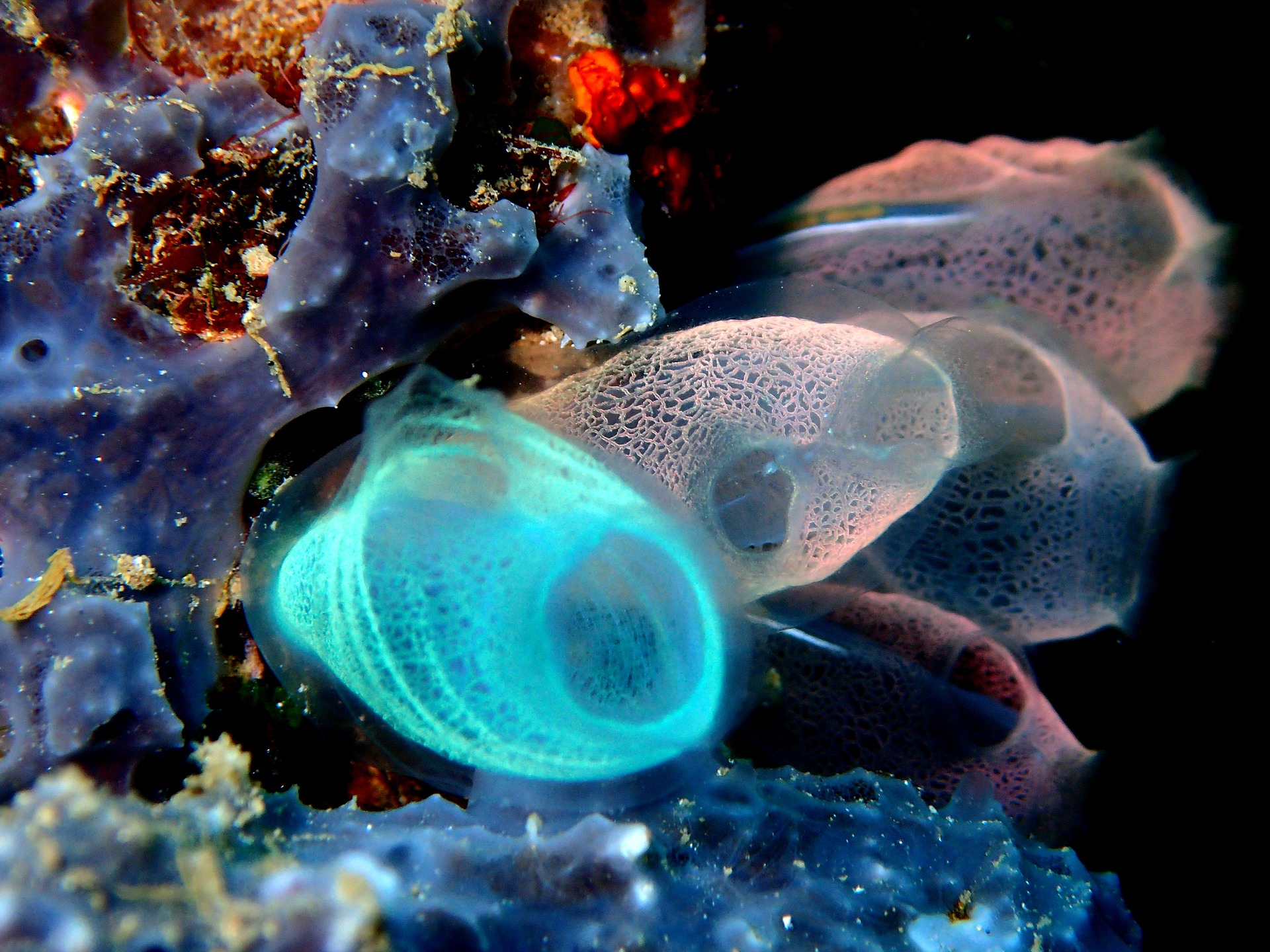Can a primitive marine invertebrate, the ‘sea squirt’, direct our understanding of human health? In recent years research has linked patterns in the gut microbiome of sea squirts to those in humans, potentially bolstering our understanding of how certain symbiotic relationships can form the foundation of a healthy gut microbiome. Ongoing research conducted by the Bruce Research Group aims to elucidate the commensal relationships between bacteria and the human gut, with a view to better understand how healthy microbiomes can differ between individuals.
Sea squirts (Ciona intestinalis) are small, translucent invertebrates with a tubular appearance; they reside primarily upon rocks or surfaces exposed to a healthy amount of seawater. Siphoning in water, the sea squirt efficiently sieves out its plankton and algal-based sustenance from excess water and waste – which the sea squirt then ejects out of its atrial syphon and anus.
Despite its seemingly basic physiology, these creatures are understood to be one of the earliest evolutionary relatives to humans, with a functioning gut comprised of a stomach and intestine. Sea squirts depend on an innate (non-specific) immune system to combat invading pathogens; as well as an innate response, humans can also rely on an adaptive, specific immune response which confers immunological memory among other benefits. The innate immune system is comprised of various physical and chemical barriers, varying immune cells as well as signalling molecules called cytokines which direct the nature of the immune response toward the stimulus (e.g., pro-inflammatory, anti-inflammatory). These factors are heavily conserved across species, allowing for more accurate recapitulation of an innate immune response, as opposed to an adaptive immune response, in humans.
The benefit of using these creatures to study a human microbiome, therefore, is twofold. Innate immunity is non-specific in nature, and so its interaction with invading microbes in sea squirts could have insights for how the human innate immune system interacts with invading microbes. The other benefit of using the sea squirt is that these creatures provide a tractable model for experimentation; it’s far easier to analyse bacterial colonies of sea squirts in situ compared to humans (which relies predominantly on faecal samples)! Of course, the practicality of using sea squirts is underpinned by the similarities between Ciona physiology and human biology: the sea squirt has been carefully selected to provide a (hopefully) accurate translation of microbiome-host interaction into humans.
A key concern is whether these models will address the key questions burdening the fields of microbiome research; if the metabolic and neuronal profile of these creatures bear little resemblance to that of humans, how could the sea squirt answer questions of how, for example, the microbiome is implicated in obesity, Alzheimer’s disease, or immune senescence? Within a field characterised by big, open-ended questions, sea squirt research would be addressing fundamental, albeit basic, issues. With the pressing need for novel, efficacious treatments in various disease landscapes (that implicate the microbiome), is this the right time to be pursuing exploratory research?
Challenges notwithstanding, it is hoped this model will provide a platform for the Bruce Research Group to better understand changes in microbiome diversity and structure, and potentially to map key mechanisms of interaction between microorganisms and host in states of both health and disease. Progress can be made in elucidating the obligate features (i.e., specific microorganisms) of a healthy microbiome (biosis), and how this is subject to change during disease states (dysbiosis).
If you found this interesting, please don’t hesitate to get in touch – I’d love to hear your ideas! We at the Bruce Research Group are always open to critical thinking.






I like yr careful wording and the clear description of the potential of this study. I read in a french review that the entero retrovirus es have been absorbed in the dna oover the eon of organisms development and are becoming partially integrated and could explain the variety off epigenism existing. Carry on
Dear Francis,
I appreciate your comments, thank you! Viruses have evolved clever ways of integrating themselves into hosts and to avoid detection by the innate and adaptive immune systems – the Epstein-Barr virus (although not a retrovirus) infects 90% of the global population! It is undeniable the impact that these and other microorganisms have had an the evolution of our immune system – recently there has been an appreciation for how viruses could contribute to the priming and development of a healthy immune system, too.